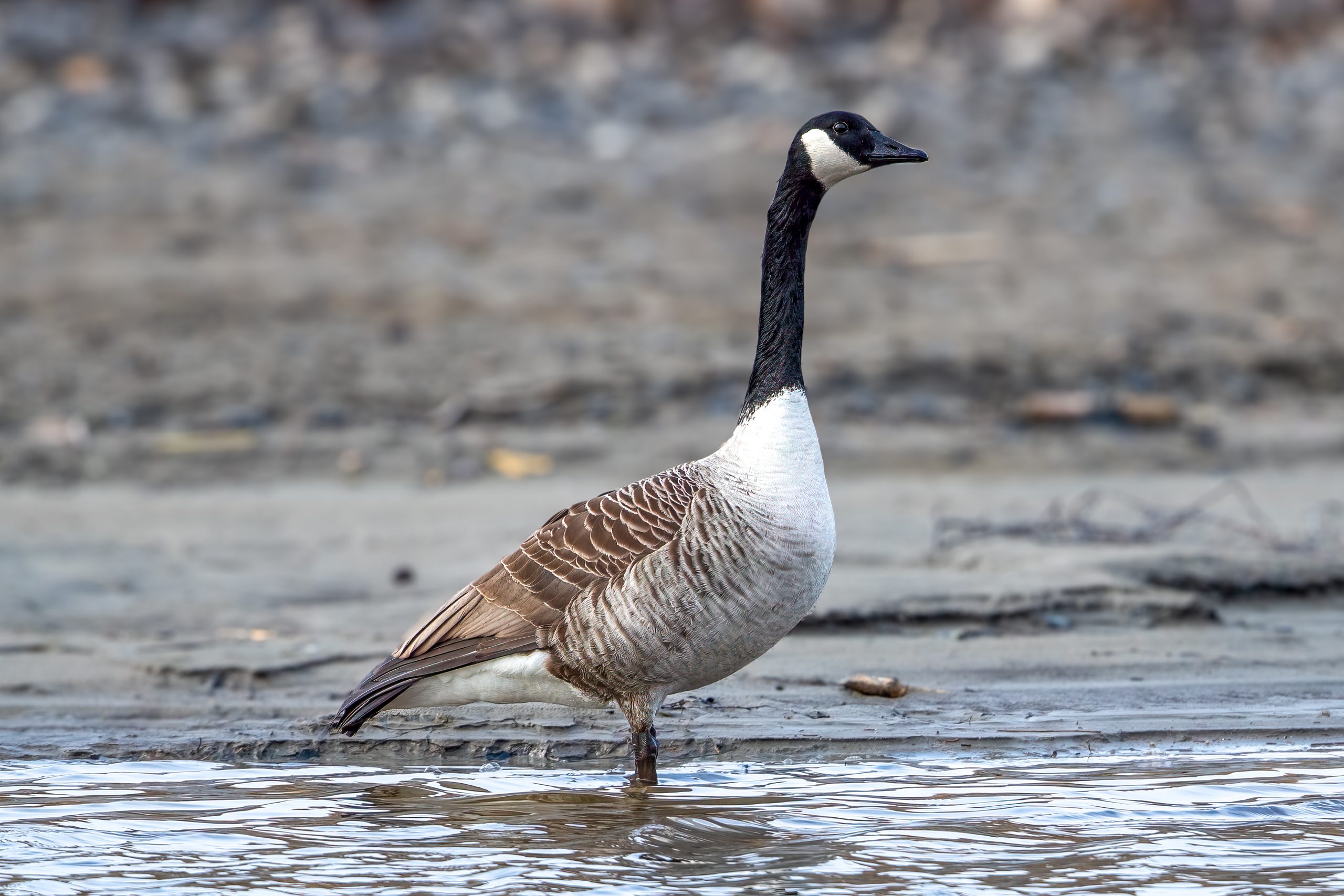Description
The barnacle goose (Branta leucopsis) is a medium-sized goose found in areas of northern Europe and the Arctic. It typically measures between 55 to 70 cm (21.6-27.6 in) in length and weighs about 1.2 to 2.2 kg (2.6-4.8 lbs). It exhibits a black head and neck, which contrasts sharply with a distinct white face, and the body feathers are primarily grey. This species shows little variation in plumage between seasons. It is similar in appearance to the brant (Branta bernicla), which has an all-black head and neck and has typically darker plumage. It is also sometimes confused the larger and locally invasive Canada goose (Branta canadensis), which has white cheeks and a browner plumage.
The name “barnacle” goose comes from the medieval belief that they hatched from barnacles. This myth persisted due to the goose’s sudden appearance in Europe during the winter months, before their Arctic breeding grounds were widely known.
Diet & habitat
Barnacle geese primarily feed on grasses, roots, and leaves. They are often found grazing in coastal marshlands, estuaries, and agricultural fields, where they can efficiently pull up grass with their strong bills. Their habitat preferences include Arctic tundra and coastal regions where they breed and winter, respectively. These habitats provide them with the necessary food sources and protection during breeding.
Migration
Barnacle geese breed in the Arctic islands of the North Atlantic and in some areas of Northern Europe, and migrate to wintering grounds in the British Isles, coastal Baltic, and along the southern coastlines of the North Sea. Migration is typically timed to take advantage of optimal weather conditions and food availability, often occurring in large, well-coordinated flocks that enhance safety and navigation efficiency.
Nesting
The breeding season begins around May, when pairs return to their northern breeding grounds. They prefer nesting in high, rocky cliffs away from predators. The female lays 3 to 5 eggs, which she incubates for about 24 to 25 days. Goslings are precocial and can feed and walk shortly after hatching, though they fledge at around 40 to 45 days. The high nesting sites provide safety, allowing goslings to develop until they are ready for their first migration.
Status
The barnacle goose is currently listed as least concern on the IUCN Red List, thanks to its stable and even increasing population sizes. This improvement is largely due to legal protections in breeding and wintering areas, along with reduced hunting pressures. Conservation efforts have been successful in mitigating previous declines, making this a conservation success story.











